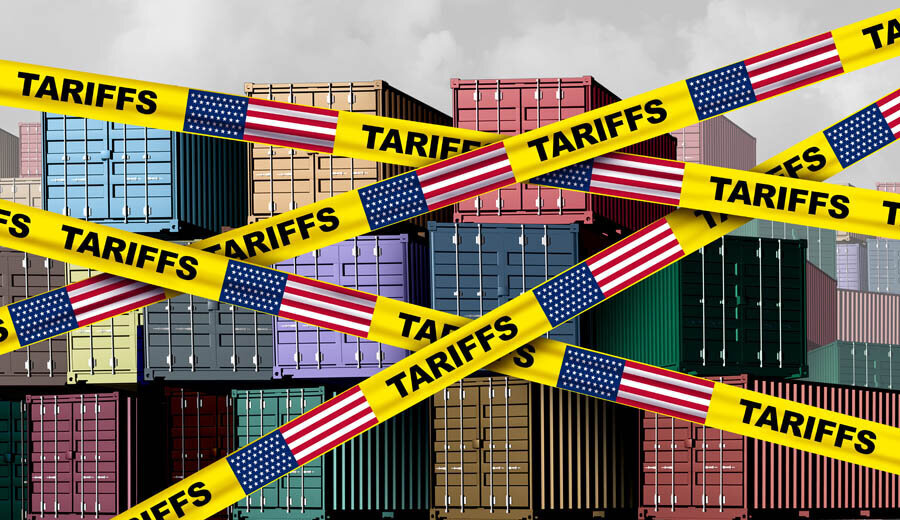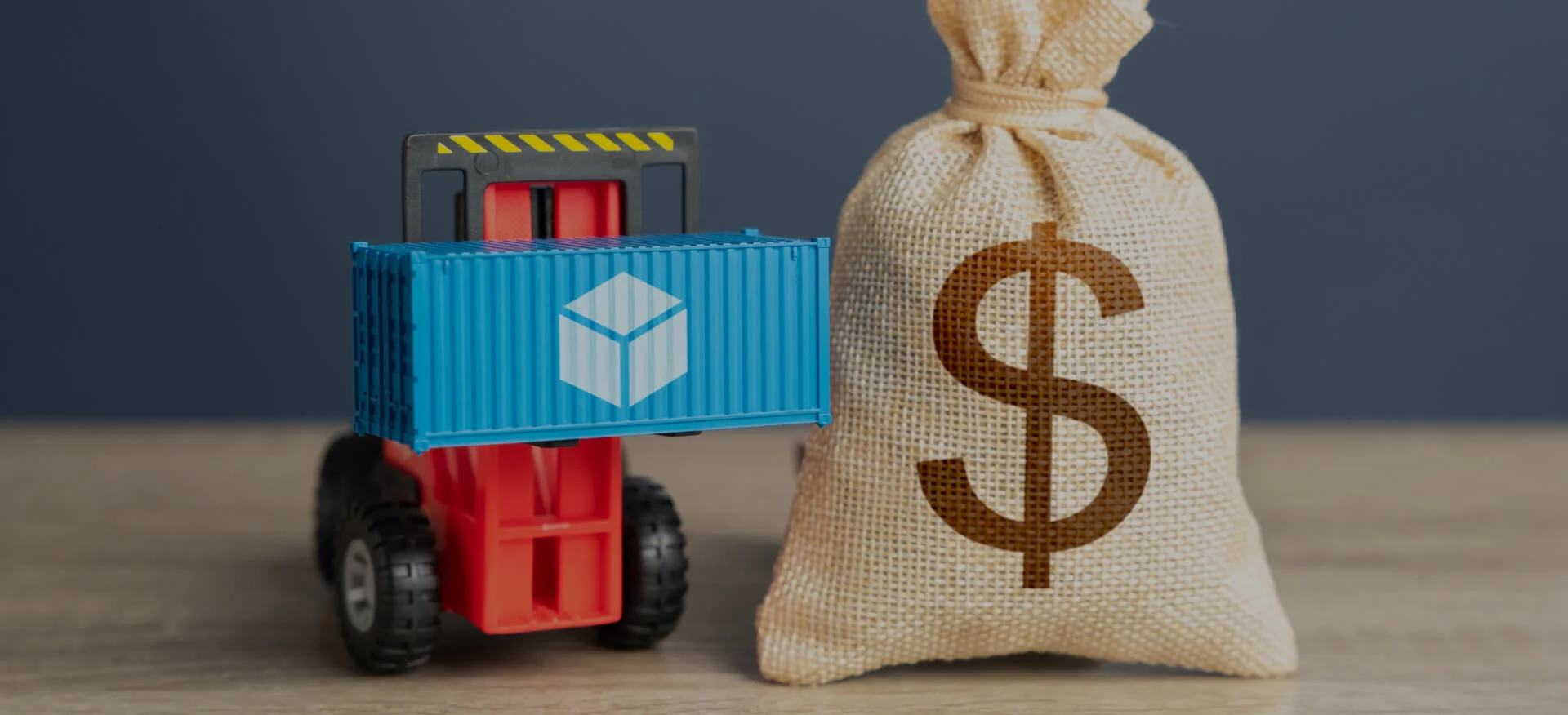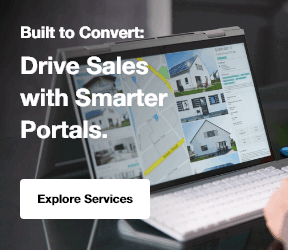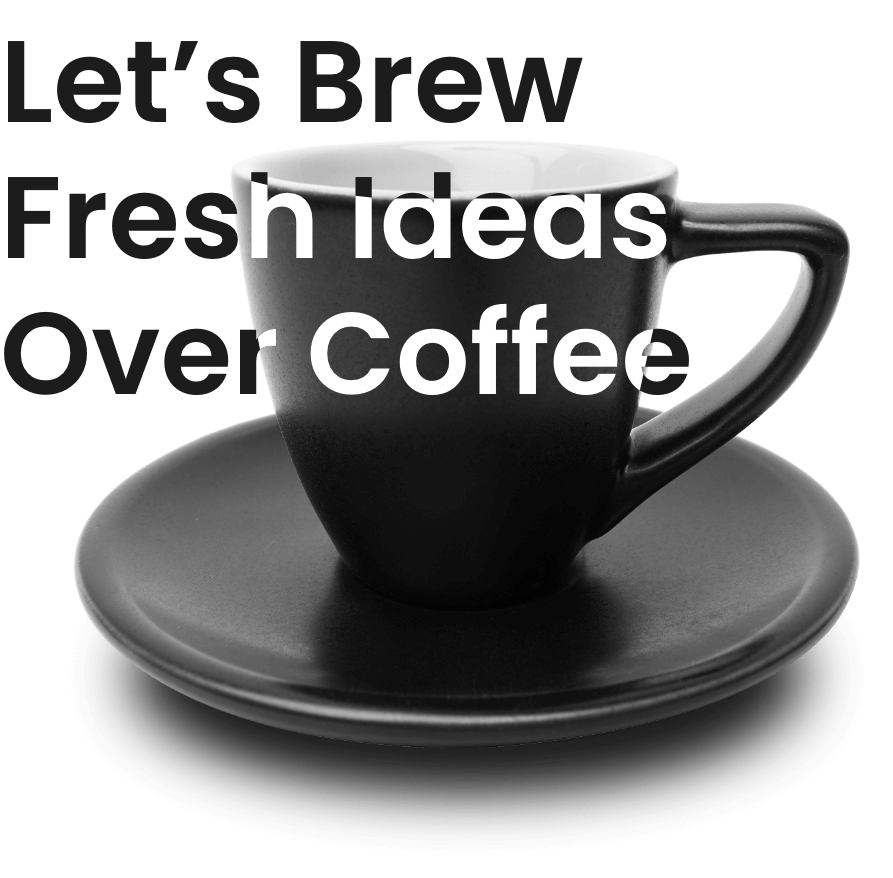In April 2025, the U.S. dramatically escalated its trade war stance, hiking import duties to historic levels (up to 145% on Chinese goods) and prompting swift retaliation from trading partners. Instead of panicking, a new breed of businesses is flipping the script; turning geopolitical turmoil into opportunities for growth. From Apple airlifting extra iPhone shipments ahead of new levies to Ford launching patriotic promotions to win over anxious buyers, companies are showing that with agility and creativity, trade war can become trade advantage. In this article, we delve into how Chief Marketing Officers (CMOs) and business leaders are navigating the latest tariff turbulence and emerging stronger. The message is clear: uncertainty isn’t going away, so the bold are learning to profit from it.
The Tariff Shockwave: Who’s Affected and How
The April 2025 tariff announcements hit like a tsunami. Practically overnight, the U.S. imposed sweeping “reciprocal” duties on imports – 125% on goods from China, Hong Kong, and Macau – while slapping a universal 10% tariff on most other countries. This pushed U.S. tariff rates to their highest level since 1901. Beijing hit back immediately, raising its own tariffs on U.S. exports to 125%. Other partners like the EU and Canada prepared retaliatory moves as well. This disrupted the stable marketplace; punishing some and creating opportunity for others.
Yet amid the chaos, businesses didn’t sit idle. They sprang into action: shipping and stockpiling goods before tariffs hit, rejiggering supply chains, and revamping market strategies. Retailers launched “pre-tariff” sales to capitalize on the fear of rising prices. In short, the shockwave forced an abrupt pivot from business as usual to business in flux – and set the stage for winners and losers to diverge sharply in the following weeks.
Sector Spotlights: Winners and Strategies That Work
While tariffs disrupted supply chains and raised costs across industries, some companies turned this challenge into a marketing opportunity. These are the brands that leaned into storytelling, value-driven messaging, and digital agility to increase sales in uncertain times.
1. Raymour & Flanigan – Turning Tariffs into a Promotion
Northeast furniture chain Raymour & Flanigan leaned into urgency marketing with a bold banner campaign: “Lock in Pre-Tariff Pricing.” Instead of fearing price increases, they used them as a trigger for customer action. This strategy tapped into buyer psychology; encouraging immediate purchases and boosting revenue; while subtly positioning the brand as transparent and customer-first.
2. Keen Footwear – The Power of Public Commitment
Amid fears of soaring apparel prices, Keen, a U.S.-based footwear brand, made headlines by declaring it wouldn’t raise prices in 2025, despite rising tariffs. This pledge wasn’t just operationally smart; it was marketing gold. The brand told a compelling story: years of diversified sourcing, manufacturing closer to home, and standing by the customer. That message resonated, winning Keen new fans and market share as competitors scrambled to adjust pricing.
3. Ford – Patriotism Meets Promotion
Ford launched a timely campaign called “From America, For America”, emphasizing its domestic production roots. It paired the message with employee pricing offers for all customers; essentially combining patriotism with value. This allowed Ford to control the narrative: it wasn’t just a carmaker dodging tariffs, it was an American brand rewarding Americans. The campaign boosted showroom traffic and reinforced Ford’s market position during a period of uncertainty.
4. Dame Products – Transparency as a Brand Statement
Rather than burying rising costs in product prices, Dame Products took a bold approach: adding a line item at checkout called the “Trump Tariff Surcharge.” This wasn’t just transparency; it was a conversation starter. For a brand that aligns with progressive values, the tactic reinforced authenticity and gave customers context. The result? The brand retained loyalty and earned attention for being candid and values-driven.
5. Freewrite – Urgency Marketing with a Purpose
When Freewrite, a niche electronics brand, saw tariffs looming, it didn’t hide. It sent targeted emails with subject lines like “Buy Now Before Prices Go Up.” It paired this messaging with blog content explaining how tariffs would impact small electronics companies. The campaign turned a macroeconomic issue into a personal story, sparking a wave of purchases before the tariffs hit. Transparency + urgency = results.
8. Cheniere Energy – Confidence Through Communication
In the B2B space, Cheniere Energy faced questions about how tariffs would affect its LNG exports. Instead of hiding behind silence, it openly addressed the issue in investor calls and media interviews, explaining how it would reroute exports and maintain earnings. That message — “we’re in control, no revenue loss expected” — reassured stakeholders and reinforced Cheniere’s image as a resilient, sophisticated energy leader.
Turning Tariffs Into a Marketing Advantage

Tariffs don’t just impact supply chains and costs – they also shape the story a company can tell. Smart companies are seizing the narrative to strengthen their brand and customer relationships. In uncertain times, marketing can turn volatility into opportunity by addressing customer fears, demonstrating values, and offering timely solutions. As one marketing survey in May found, tariffs and inflation have made consumers deeply anxious about rising prices, so brands that lead with empathy, transparency, and value will stand out. This approach is something that What Texas Real Estate Developers Can Learn from Dubai’s Global Marketing Playbook also emphasizes adapting to global shifts and leveraging unique marketing strategies to strengthen customer loyalty. Let’s look at how firms are doing exactly that:
1. Making Lemonade out of Lemons with Promotions
Many businesses have launched “beat the tariff” deals to spur purchases. These promotions play on the psychology that when people fear prices will rise, they rush to buy – a dynamic Professor Denish Shah likens to irrational stockpiling under uncertainty. We saw examples across sectors: Burlap & Barrel (a spice importer) turned a routine spring sale into an “impromptu Tariff sale” with 20% off all products, explicitly framing it as helping customers stock up before potential price increases. They even messaged that the sale would help them continue buying from small farmers despite “economic instability and political crisis,” tying their promotion to a higher mission. Likewise, electronics maker Freewrite blasted an email to its customer list urging, “buy now before we must raise prices next week” due to tariffs – a candid push that likely drove a spike in orders. These tactics turn tariff jitters into immediate sales and deepen customer engagement (the brand is seen as looking out for the consumer’s wallet).
2. Transparent Communications Build Trust:
Rather than silently adjust prices, several companies have made a point to communicate openly about tariff impacts. This is a savvy marketing move; consumers value honesty, and it preempts confusion. In B2B sectors, communications have been just as crucial; Honeywell’s building systems division, for instance, sent letters to clients about a 6.4% tariff surcharge on equipment and promised to remove it once tariffs are lifted. By being upfront, companies like Honeywell control the narrative (“we’re not price gouging – this is a government tax”) and position themselves as partners to customers in navigating the challenge. We specifically recommends being transparent about how tariffs affect pricing and availability as a best practice– a strategy these companies have embraced.
3. Patriotic and Values-Driven Branding:
Tariffs often stir nationalist sentiment, and some marketers have leaned into messages of resilience and patriotism. We also saw oil and gas marketing agency highlight local production in marketing materials more prominently. Ads and social media posts began to tout “Made in USA” or “Tariff-free sourcing” badges where applicable, to reassure buyers that purchasing from them supports domestic jobs and won’t be subject to sudden price swings. Such messaging turns a complex policy issue into a simple purchase proposition: choose us, avoid tariff drama.
4. Offering Extra Value to Cushion the Blow:
To keep customers on board despite uncertainty, companies are adding value in creative ways. Some introduced tariff-related warranties and guarantees. This kind of promise eases the fear of “buying at the wrong time.” Others expanded loyalty rewards or financing options: Ashley Furniture rolled out 72-month 0% financing promotions during the tariff rumblings. Similarly, auto dealers ramped up 0% APR deals and threw in free maintenance packages – sweeteners to keep customers coming through the door even if headline prices in the future might rise.
The big takeaway is that marketing agility is as important as operational agility in a tariff crisis. Companies that quickly adjust their messaging – whether to promote a sale, reassure about price stability, or reinforce brand values – are capturing consumer attention (and dollars) that might otherwise be lost. Digital marketing tools make this easier: many of the above examples were executed via targeted emails, rapid website updates, and social media – channels that allow instant communication.
A survey by Optimove found 55% of U.S. consumers are very concerned about tariff-related price increases, so marketers have a ripe moment to connect by acknowledging those concerns. In short, turning tariffs into a marketing advantage means addressing the elephant in the room and using it to underscore why your company is the right choice during the storm. The best firms aren’t shying away from the topic – they’re owning it.
Explore digital marketing Services!
Why Your Lead & Client Lists Are Your Lifeline in Volatile Times
In times of volatility, one asset becomes incredibly precious: your direct relationship with customers and prospects. When external conditions are shifting daily, having an established line of communication to your audience can spell the difference between thriving and scrambling. Smart companies in 2025 are leaning heavily on their CRM (Customer Relationship Management) systems and inbound marketing strategies to stay agile and customer-centric amid the tariff chaos.
Consider this: when Freewrite decided to urge customers to buy before price hikes, they didn’t take out a TV ad – they sent targeted emails to people who had shown interest in their products. Their existing lead list enabled a rapid, precise outreach, converting hesitant shoppers into buyers with a well-timed nudge. Likewise, furniture manufacturers like Ashley and Flexsteel communicated their tariff strategies (price freezes, surcharges, etc.) directly to their dealer networks via letters and portal updates. By doing so, they kept their clientele informed and assured before rumors could spread. This highlights a key point: in uncertain times, proactive communication beats reactive.
A robust CRM also allows segmentation and personalization in these communications. Not every customer is affected equally by tariffs, so tailoring messages is crucial. For example, a B2B marketing company might segment customers by industry to send specialized updates (a message to automotive clients about part availability, versus a message to retail clients about price adjustments). Inbound Marketing tools like Centric C2 enable companies to “prioritize key accounts for proactive communication” and “tailor messaging to specific customer segments”, avoiding one-size-fits-all notices. Companies employing this strategy likely saw better responses, with communication geared to pacify the concerns of different industries. This triage ensures your best customers feel taken care of, preserving revenue.
For CMOs and Marketing Directors, the lesson is clear: invest in building and nurturing your contact lists. Those who had a strong database and CRM strategy going into Q2 2025 were able to pivot their marketing and sales approach literally overnight by tapping their existing contacts. Those without that foundation found themselves scrambling to get messages out via general channels with far less effectiveness. Volatile times separate companies that have cultivated their customer relationships from those that have not. The former are able to rally their “troops” (loyal customers) with timely campaigns and reassurances; the latter risk silence or confusion. In sum, your leads and clients are your lifeline; keep them close, keep them informed, and they’ll reward you with business even in the toughest of times.
The Digital Edge: Turning Data Into Profit

Underpinning all these agile responses – in supply chain, marketing, and customer service – is a strong digital backbone. Companies that invested in data and Digital Transformation Services are pivoting far faster than those that rely on gut instinct and manual processes. In a trade volatility scenario, data is gold. The ability to harness real-time information and deploy changes quickly can literally turn a potential loss into a profit. Here’s how smart companies are leveraging Product Information Management (PIM), CRM, AI, automation, and dynamic websites to conquer tariff uncertainty:
1. Product Information Management (PIM) for Rapid Recalibration:
When tariff rules change by the day, product details like cost, sourcing, and compliance requirements do too. Firms with robust PIM systems can identify which SKUs are impacted by new tariffs instantly and update their data in one central hub. For example, a multi-brand retailer used its PIM to filter all products sourced from China and tag them as “Tariff-affected” in April; this list informed everything from pricing decisions to which items to promote. With a few clicks, they could modify sourcing info, pricing, and certifications for those products in the database. More importantly, modern PIM allows automatic syndication of those updates across sales channels.
2. One outdoor furniture e-commerce player did this when Vietnamese goods got hit with new tariffs:
They updated the cost in their PIM, which then pushed the new price to their website listings, their sales team’s quoting system, and even in-store price tags in near-real time. This avoided confusion and ensured margin protection. On the flip side, without PIM, companies risk selling with outdated info (imagine taking orders for a product you can’t source profitably anymore) – a potentially costly mistake. In short, PIM turns a maze of data updates into a streamlined process, converting disruption into an opportunity to shine in front of customers with accuracy.
3. Marketing Automation for Precision Engagement:
We discussed the importance of client lists – now, the tech side of that is a capable marketing automation setup. When tariff news hit, systems like Centric C2 enabled prompt, segmented messaging and also helped manage the follow-through. With workflows, one company set up an automatic alert for any high-value customer who hadn’t responded to the tariff update email within a week, triggering a personal call from their account manager. This kind of automation ensures a consistent, thorough approach to customer management when your team is swamped.
4. Dynamic Websites and E-commerce Flexibility:
In April 2025, many companies had to update their websites overnight with tariff-related info – whether it was a banner about sale pricing, a pop-up about potential shipping delays, or adjusting every single price site-wide. Those with dynamic content management systems and modern e-commerce platforms could do this in a snap. On the pricing front, e-commerce firms that had invested in Product information management systems could update thousands of SKUs with a new pricing rule (say, +10% for products from Country X) programmatically, rather than editing each product manually.
5. Several direct-to-consumer brands also experimented with geo-targeted content:
If a user from Europe visits the site, show the original price; if a user from the U.S. visits, highlight tariff-related messages with increased pricing or prioritize domestic-made products. This dynamic tailoring ensures the marketing message hits the right note depending on context. The agility of a company’s digital experience directly affects how well it can convert the curious into customers during uncertain times.
6. AI and Predictive Analytics:
Staying Ahead of the Curve – The volatility of tariffs is exactly the kind of complex problem where Artificial Intelligence shines. Companies are deploying AI in multiple ways to profit from uncertainty. One use is demand forecasting: AI models can ingest tariff changes, price elasticity data, and consumer sentiment to predict how demand for certain products will change. For example, after the tariff on electronics was announced, a retailer’s AI system predicted a surge in demand for older smartphone models and a dip in high-end new model sales.
This prompted the retailer to redistribute inventory to stores and ramp up marketing on the budget models – actions that led to selling out of inventory at healthy margins. AI can also help with supplier optimization: given new tariffs, what’s the optimal mix of sourcing? One manufacturer fed tariff scenarios into an AI tool that recommended shifting 30% of volume from Supplier A (China) to Supplier B (Mexico) to minimize costs, even accounting for Supplier B’s slightly higher base price. These decisions get very complex (consider different tariff rates, capacities, lead times), and AI’s ability to simulate countless combinations in seconds is invaluable.
In essence, digital tools turn data into profit by enabling speed, accuracy, and intelligence. Companies that treated their data infrastructure as a strategic priority pre-tariffs are now able to execute complex pivots with relative ease. They maintain “one version of the truth” across the organization, so everyone from procurement to sales to marketing is in sync and working off the latest info. As a result, they can do things like maintain sales momentum during supply disruptions and keep customers confident with up-to-date info, instead of losing ground.
Conversely, firms lacking this digital edge find themselves reacting slowly, often with internal confusion (sales quoting old prices, marketing promoting items that are out of stock due to sourcing issues, etc.) – which is immediately apparent to customers and damaging to the bottom line. The tariff turmoil of 2025 is proving to be a litmus test for digital maturity: those who invested in unified data and automated processes are not only surviving – they’re thriving, by seizing opportunities that others miss.
How Centric Helps You Profit From Uncertainty
In these case studies of adaptation, one theme emerges repeatedly: success isn’t an accident but the result of deliberate strategy, systems, and foresight. This is where Centric comes in. Centric specializes in equipping companies with the marketing, data, and customer infrastructure needed to navigate turmoil like the current tariff situation – and come out ahead.
Centric has been guiding clients to build the kind of resilience and agility we’ve described. In fact, Centric’s experts have been sounding the alarm on data preparedness – As Usman Khalid, CEO of Centric says, “There has never been a more compelling business case than now to invest in improving the timeliness and accuracy of your operational information,”. That insight captures Centric’s philosophy – by investing in the right capabilities during uncertainty, you set yourself up to not just weather the storm, but outperform in it. So how exactly can Centric help an organization flip uncertainty into opportunity?
1. Building a Unified, Real-Time Data Ecosystem:
Centric’s consultants excel at integrating systems like PIM, CRM, ERP, and web platforms into a cohesive whole. If your product info, customer data, and analytics are siloed, you can’t respond rapidly. Centric can implement a unified data hub (for example, connecting your Salesforce CRM with a PIM like Pimcore, your website, partner portal and third party marketplaces) so that you have a single source of truth and instant synchronization across channels. This means when a tariff change hits, you update data once and it propagates everywhere – exactly the capability we saw winning in 2025. Centric has done this for multi-channel retailers and manufacturers, streamlining their data flows and cutting update times from days to minutes. The payoff is huge: sustained revenue and customer trust because your information is always current. Centric also emphasizes data quality and governance (so no errors creep in during frantic adjustments via extensive verification rules).
2. Customer Strategy Enhancements:
Many companies have CRM software but underutilize it; the main reason it is cumbersome and with most brands only has those people that were leads or customers at some point in time. Centric’s C2 sits between CRM and your website to personalize, target and track the visitors and their behavior; dividing them into personas for email or text engagement. This practice helps organizations unlock the full power of their customer data as well increase the basket by 10X by including people that were somewhat interested or are targets but never made it to CRM. By setting up advanced segmentation and automation, we can help you interact with your target customer at the right time.
3. Dynamic Web and E-commerce Development:
If your website and digital experience can’t keep up with rapid changes, Centric’s digital team can revamp it. We design dynamic, content-rich websites that marketing teams can update. But more importantly Centric also offers “Unlimited Changes Retainer”; which means that we are always one call, message or email away. Additionally, we focus on the customer journey: Centric can implement personalization engines so that your site shows the most relevant content to each visitor (e.g., highlighting made-in-USA options to a visitor who shows concern about tariffs). All of this builds a digital agility that turns your online presence into a tool for conversion under any market conditions.
5. Cross-Functional Strategy and Execution:
Perhaps most importantly, Centric acts as a partner in connecting the dots between IT, and marketing. Profiting from uncertainty requires these traditionally separate functions to work hand-in-hand. Centric’s consultants take pride on breaking silos. For Nissan, at the height of Pandemic; we developed a eCommerce user journey fully integrated with different banks to offer vehicle finance for 13 different regions.
In short, Centric helps you build the infrastructure of resilience. Tariffs are just one example of disruption – others will come (be it supply shocks, pandemics, or new regulations). Centric’s mission is to prepare you not just to handle these changes, but to find the upside in them. We do that by enabling data-driven decision making, rapid execution, and customer-focused strategy. As we’ve seen, the companies that treat uncertainty as an opportunity are succeeding.
Conclusion: Don’t Wait for Stability — Get Stronger in the Storm
If there’s one lesson from the tariff turbulence of 2025, it’s this: waiting for things to “go back to normal” is not a strategy. The global trade environment may remain volatile for months or years – and even if tariffs subside, new uncertainties will arise.
Economic history shows that disruption often separates leaders from laggards. Those who adapted quickly to the April tariff shock have in many cases boosted sales or gained market share. More importantly, they have built muscles that will serve them in any crisis: agile teams, flexible systems, a culture of proactive innovation.
As a Bain & Company insight aptly put it, the companies “treating tariffs not as a one-time disruption but as a structural risk — and an opportunity to build more resilient, data-driven, and nimble supply chains” are pulling ahead of the pack. They are not hoping for a return to 2024 conditions; they are preparing to thrive in whatever 2025 and beyond throws at them.
For marketing and business leaders reading this, the imperative is clear. Don’t wait for stability. Instead, use the instability to your advantage. Audit your capabilities – do you have the customer data, the digital infrastructure, the supply chain visibility to respond next time overnight changes hit? If not, now is the time to invest and find a reliable digital partner. The storm is not something to sit out – it’s something to power through, and in doing so, distance yourself from competitors still hunkering down.
Talk to us today by filling the contact form.








